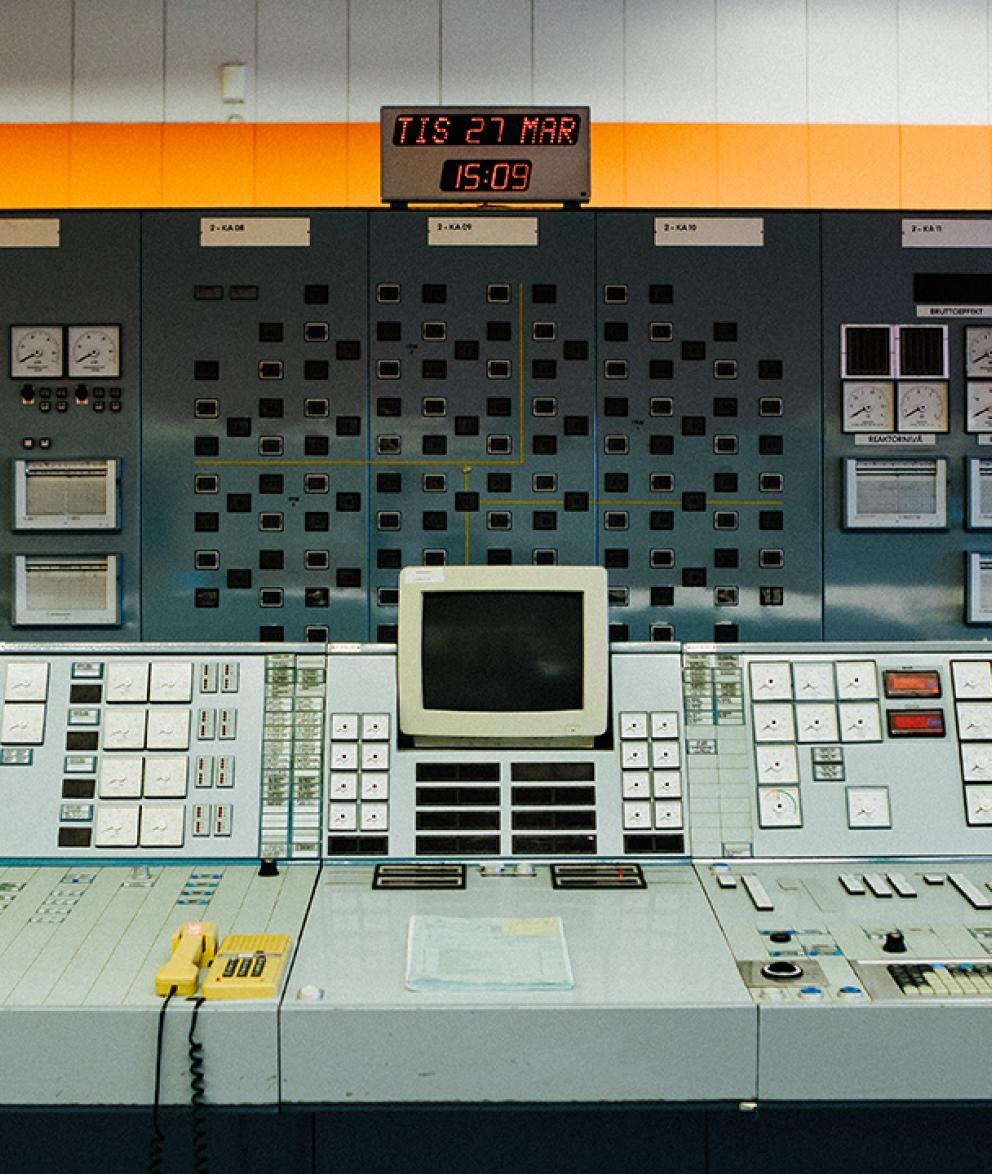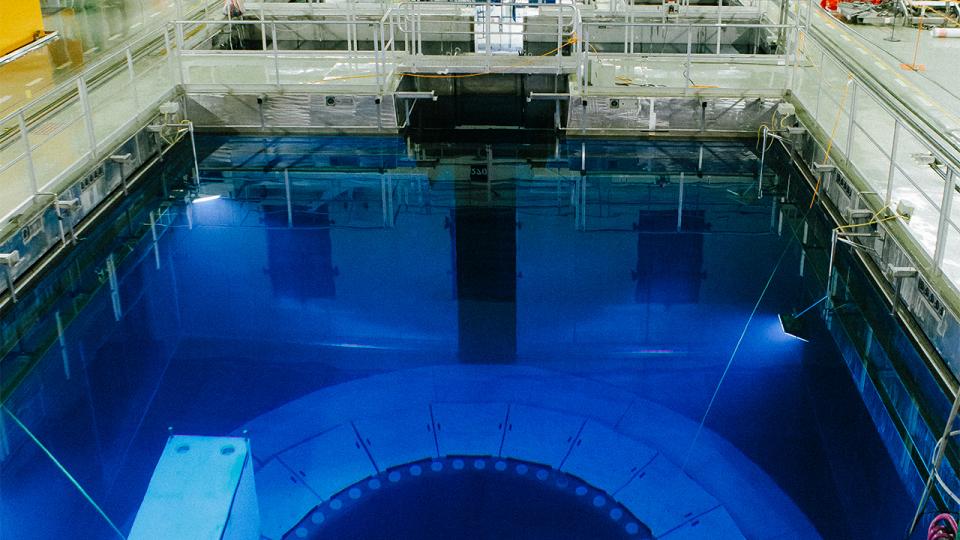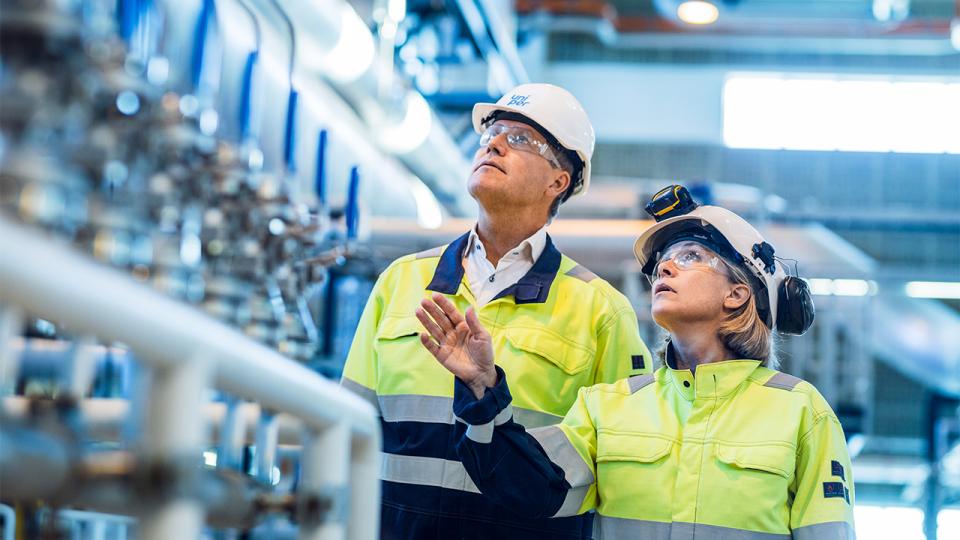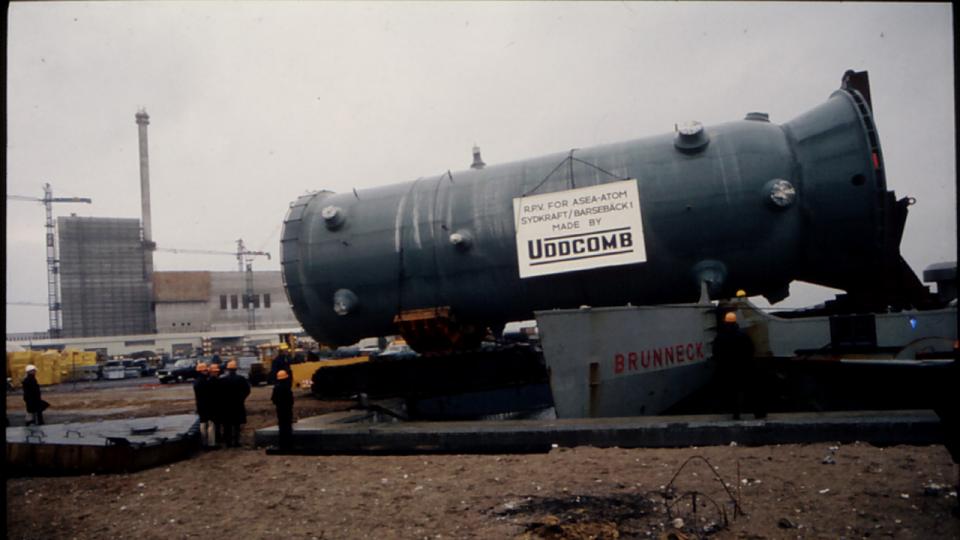| Data | Barsebäck 1 | Barsebäck 2 |
|---|---|---|
| Construction start | 1971 | 1973 |
| Commercial operation | 15 maj 1975 | 1 juli 1977 |
| Gross capacity | 615 MW | 615 MW |
| Permanent shutdown | 30 november 1999 | 31 May 2005 |
| Electricity supplied | 93,8 TWh | 108 TWh |
Technical data Barsebäck
|
Net output (electricity) |
600 MW |
|
Reactor type |
Boiling water reactor |
|
Reactor supplier |
Asea-Atom |
|
Turbine supplier |
Stal-Laval |
|
Commercial operations |
B1 1975, B2 1977 |
|
Thermal reactor output |
1800 MW |
|
Number of circulation circuits |
4 |
|
Operating pressure |
70 bar |
|
Total reactor cooling water flow |
7,700 kg/s |
|
Steam flow |
900 kg/s |
|
Steam pressure |
7.0 MPa |
|
Steam temperature |
286°C |
|
Feedwater temperature |
184°C |
|
Weight |
530 tons |
|
Total height |
20 m |
|
Inner diameter |
5.45 m |
|
Material thickness |
12.6 cm |
|
Number of fuel elements in reactor core |
444 |
|
Fuel weight per element |
UO2 181/172 kg |
|
Number of fuel rods per element |
100/96 |
|
Sealing material |
Zr2 |
|
Pellet diameter |
8.19 mm |
|
Type |
cruciform blade |
|
Number |
109 |
|
Absorber material |
hafnium, boron carbide |
|
Control drive type |
electro-hydraulic |
|
Type |
enclosed centrifugal pumps |
|
Number |
4 |
|
Flow |
2.55 m³/s |
|
Lifting height |
55 m |
Turbine
- In-depth data about the turbine units. One unit per block. One turbine unit is connected to the reactor. The turbine unit consists of one high-pressure turbine and three low-pressure turbines that are mounted on the same shaft as the generator.
- The turbine buildings also contain the condenser, cooling water and feedwater pumps.
|
Net output |
615 MW |
|
Coefficient of utilization |
33.7% |
|
Steam flow |
813 kg/s |
|
Moisture content in primary steam |
0.004% |
|
Pressure/temperature before high-pressure turbine, MPa/°C |
6.1/284°C |
|
Pressure/temperature after high-pressure turbine, MPa/°C |
0.65/162°C |
|
Pressure/temperature before low-pressure turbine, MPa/°C |
0.62/256°C |
|
Pressure/temperature in condenser, MPa/°C |
0.043/30°C |
|
External moisture separator and intermediate overheating up to 256°C |
|
|
Number of outlets and area per turbine |
6x8.5 m² |
|
Outlet blade length |
95 cm |
|
Number of revolutions |
3,000 rpm |
|
Flow, condenser cooling water |
22.2 m³/s |
|
Temperature increase in condenser cooling water |
11.8°C |
|
Cooling water pumps/turbine |
4 |
|
Dumping capacity |
100% |
|
Total length of turbine unit: |
50 m |
Electrical equipment
- Key facts about the electricity generator, transformer and reserve-power diesels.
- An electricity generator is linked to each turbine at Barsebäck.
- With two turbines – one on each block – there were two generators.
|
Brand |
ASEA |
|
Number |
1 |
|
Force output |
620 MW |
|
Rated voltage |
17.5 kV |
|
Rated output |
710 MVA |
|
Stator cooling |
water |
|
Rotor cooling |
water |
|
Number |
1 |
|
Rated voltage |
17.5/410 kV |
|
Rated output |
700 MVA |
|
Number |
4 |
|
Motor manufacturer |
MTV |
|
Nominal output |
1,600 kW |
|
Rated voltage |
6.3 kV |
|
Rated output |
2.1 MVA |
|
Number of revolutions |
1,500 rpm |
Decommissioning and demolition
- Since April 2020, Barsebäcksverket has been undergoing dismantling and demolition. The dismantling process and removal of radioactive materials and large components within the plant will continue until 2028.
- The directives of the Swedish Radiation Safety Authority (SSM) continue to impose stringent requirements on our operations – we are still classified as a nuclear facility, even if the power plant is shut down and no nuclear fuel remains.
- We are also working with the handling and transportation of operational waste to the SFR final repository in Forsmark, and thereby continuously reducing the range of activities at the plant.
- We are also continuing with our sales operations – components that we no longer need can in some cases be reused in other nuclear facilities or for other industries.
Find out more
The method used for generating electricity in a nuclear power plant is the same as with a coal power plant or a bioenergy power plant.
History of the industry from 1965 to the present.



